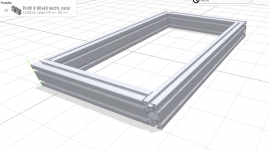I used the European fittings from PCL because...well, I live in Europe. [big grin]
well well, it looks like your beloved wife must be very proud of you - not just because of your obvious striving and degree of perfection, but also your very tidyness compared to the average diy guy when looking at your posted images.
so, lucky lucky german wife she is, in particular when i think of all the wonderful nice christmas gifts you are able to create for her now... 8)
in terms of your project a couple of more questions have come to mind:
- who and what is pcl as i don´t know anything about it so far?
- how would you describe valchromate, its properties and your experience so far in comparison to mdf?
- bench dogs: i have noticed that you seem to use 2 different benchdog systems: the one from benchdogs, and the other one from ujk. what´s the reason for this?
- and the last one for today: in hindsight what would you differently with your workbench project ? in terms of eg. design/ construction of the bench, work order, parts being used, work flow etc.





